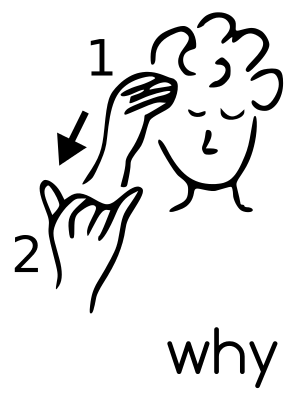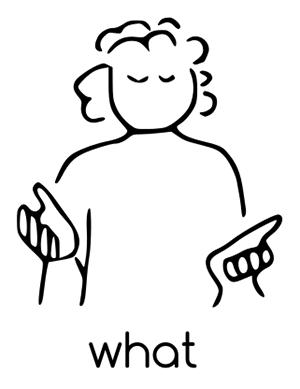Home Page
Why InterpNET was Created
 Hi, I’m Kierstin Muroski, developer of InterpNET. I’ve spent most of my career working in rural/isolated settings, spending a great deal of time searching for resources and networks online. Over my 20+ years of teaching, I've collected numerous resources and felt inspired to make sure others have access to the same resources. InterpNET is meant to spotlight the current resources for our field -- from individual to institutional efforts made to support the Deaf community.
Hi, I’m Kierstin Muroski, developer of InterpNET. I’ve spent most of my career working in rural/isolated settings, spending a great deal of time searching for resources and networks online. Over my 20+ years of teaching, I've collected numerous resources and felt inspired to make sure others have access to the same resources. InterpNET is meant to spotlight the current resources for our field -- from individual to institutional efforts made to support the Deaf community.
Who is InterpNET for?
 InterpNET is a valuable resource for anyone interested in signed language interpreting, including educators, students, researchers, and practitioners. The website supports teaching, learning, interpreting, and research on both global and personal levels. Its categorized database and search functions make it easy to find specific information and resources, enhancing users' understanding of signed language interpreting and related topics.
InterpNET is a valuable resource for anyone interested in signed language interpreting, including educators, students, researchers, and practitioners. The website supports teaching, learning, interpreting, and research on both global and personal levels. Its categorized database and search functions make it easy to find specific information and resources, enhancing users' understanding of signed language interpreting and related topics.
How to Use InterpNET
 InterpNET's content has been thoughtfully categorized to be both helpful and respectful. The categories (Deaf Life & Culture, Interpreting Resources, US States, Books, Journals) enable easy navigation, allowing users to quickly find relevant content. Additionally, you can use the search bar to find specific information by entering keywords. The distinction between resources for the Deaf community and the interpreting community is important; when exploring the "Deaf Life and Culture" page, please appreciate it as a Deaf-centered space not meant for interpreters yet supporting interpreters' work.
InterpNET's content has been thoughtfully categorized to be both helpful and respectful. The categories (Deaf Life & Culture, Interpreting Resources, US States, Books, Journals) enable easy navigation, allowing users to quickly find relevant content. Additionally, you can use the search bar to find specific information by entering keywords. The distinction between resources for the Deaf community and the interpreting community is important; when exploring the "Deaf Life and Culture" page, please appreciate it as a Deaf-centered space not meant for interpreters yet supporting interpreters' work.
What is Crowdsourcing?
 Crowdsourcing for a digital repository allows users to actively participate in preserving and enriching the website's resources. If you have valuable content that can fill the gaps of the InterpNET digital repository, take the opportunity to share it through the provided link on the horizontal navigation bar called “Add a Link”. It takes less than a minute to contribute: when you click “Add a Link” you simply paste the website address you’d like to see added and answer a few other short questions. Your contribution could make a lasting impact on the repository and be enjoyed by users worldwide. So, if you have a passion for preserving history, sharing knowledge, or contributing to a vast digital archive, contribute a link to InterpNET today and become part of a global community dedicated to preserving and promoting our digital heritage!
Crowdsourcing for a digital repository allows users to actively participate in preserving and enriching the website's resources. If you have valuable content that can fill the gaps of the InterpNET digital repository, take the opportunity to share it through the provided link on the horizontal navigation bar called “Add a Link”. It takes less than a minute to contribute: when you click “Add a Link” you simply paste the website address you’d like to see added and answer a few other short questions. Your contribution could make a lasting impact on the repository and be enjoyed by users worldwide. So, if you have a passion for preserving history, sharing knowledge, or contributing to a vast digital archive, contribute a link to InterpNET today and become part of a global community dedicated to preserving and promoting our digital heritage!
Our Team of Creators
This initiative would not have been possible without an incredible team of faculty, staff, and students at RIT|NTID.
Kierstin Muroski, Content Collector/Curator, Site Developer (NTID Faculty, RITE Lab Director)
Joan Naturale, Content Curator (NTID Librarian/Deaf Studies Archive Liaison)
Rebekah Walker, Omeka Designer (RIT Digital Humanities/Social Science Librarian)
Christina Wrynn, US States Content Collector (NTID Honors Student)
Kirk Anne, Content Engineer (RIT ITS Research Computing Center Director)
Stephen Jacobs, Funding Co-PI & Project Mentorship (Open@RIT Director)
Hanul Morgan, Digital Humanities Co-op user Interface Designer (RIT Student)
Erich Snell, Digital Humanities Co-op Web Designer (RIT Student)
Misha Szende, Library Web Designer (RIT Student)
Sunil Sharma, Content Retriever (NTID Research Assistant)
Lyn Eaton, Content Augmentor (NTID Research Assistant)
Jaide Winant, Content Collector & Augmentor (NTID Research Fellow)


